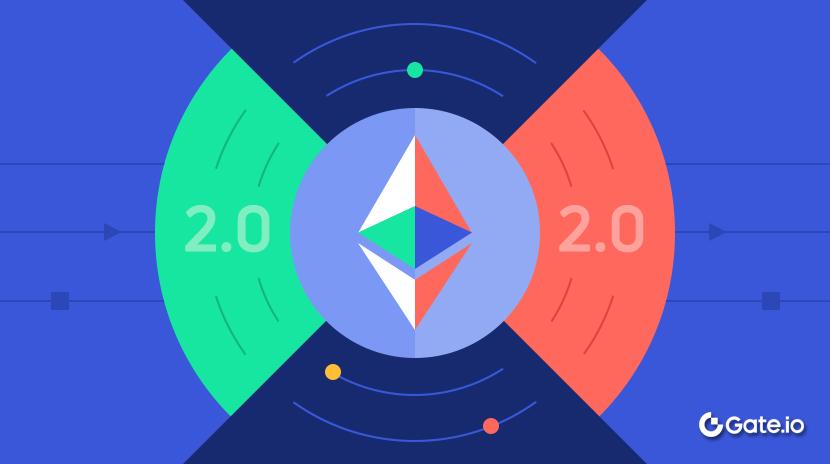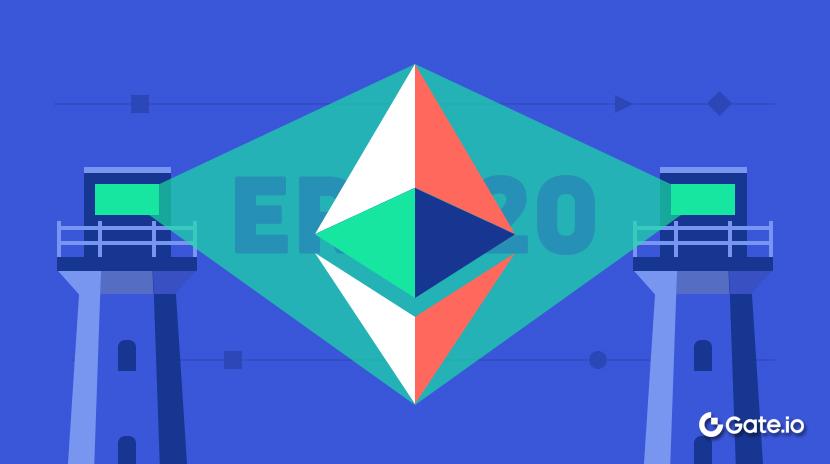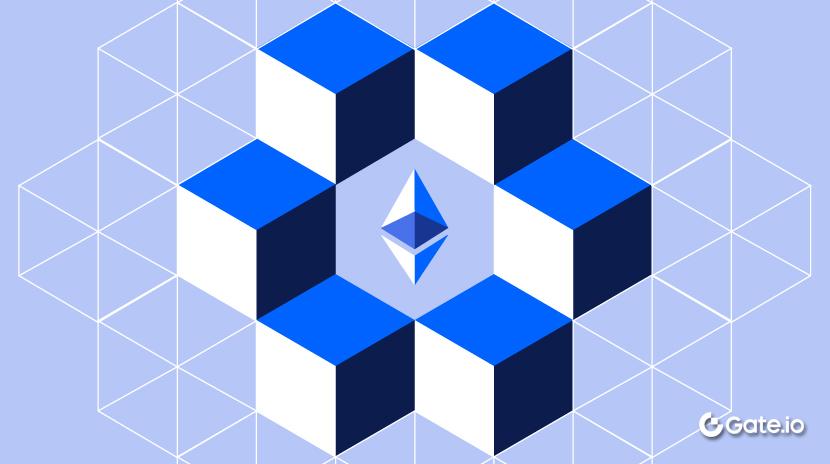Popular Science in Vernacular: Vitalik proposes to replace EVM with RISC-V. What exactly is he doing?
As an editor, staying updated on cutting-edge narratives and technologies is a must.
For example, Vitalik’s technical blog often shares serious and hardcore technical viewpoints, which quickly become material for media coverage.
However, being exposed to these ideas is one thing—understanding them is another.
A couple of days ago, Ethereum founder Vitalik proposed a bold idea—to replace Ethereum’s core component, the EVM (Ethereum Virtual Machine), with something called RISC-V.

The English-speaking crypto Twitter has already seen extensive discussion on this topic, but the Chinese-speaking community seems less interested in such hardcore, technical details.
After all, ETH’s price performance has been underwhelming, and the consensus is that “technical improvements won’t save ETH maximalists.”
But driven by curiosity and a faint hope of salvaging the buried ETH in my portfolio, I took a closer look at Vitalik’s RISC-V proposal and tried to explain it in plain language—what it entails and its potential impact.
Just in case you’re still interested in ETH-related developments.
EVM Speaks Dialect, RISC-V Speaks Mandarin
First, some background.
Ethereum is a blockchain platform, akin to a decentralized “supercomputer.” It runs smart contracts—self-executing programs used for DeFi applications, NFT trading, and more.
The key point is that Ethereum’s smart contracts run on something called the EVM (Ethereum Virtual Machine).
The EVM acts like an interpreter, translating code written by developers (e.g., smart contracts in Solidity) into instructions (bytecode) that Ethereum can execute.
This setup worked well and has been running smoothly so far.
But the EVM has a problem: it’s a custom system that isn’t fully compatible with mainstream computer languages, leading to inefficiencies, especially when handling complex tasks.
So, what does RISC-V have to do with this?
RISC-V (pronounced “risk-five”) is an open-source computer instruction set architecture (ISA), somewhat like a “language standard” for computers.
Developed by UC Berkeley in 2010, it’s now widely used in chips for smartphones, laptops, sensors, and other devices. Unlike traditional Intel or ARM chips (which use proprietary instruction sets), RISC-V is fully open-source—anyone can use it to design chips, making it the “Linux of hardware.”

(Image source:CSDN)
You might wonder: What does this hardware-focused ISA have to do with Ethereum? Why is Vitalik interested in RISC-V?
Simply put, RISC-V can solve many of the EVM’s problems. As mentioned earlier, the EVM is an “interpreter,” but its “dialect” is outdated and incompatible with mainstream computer languages, requiring cumbersome translation every time a smart contract runs, leading to inefficiency.
RISC-V, on the other hand, is a modern “universal language” already adopted by many devices, with mature tools and technologies. If Ethereum could write smart contracts directly in RISC-V, it would eliminate the need for translation, greatly improving efficiency.

Specifically, RISC-V could be applied to Ethereum’s “execution layer.”
What’s the execution layer? It’s the “core engine” that runs smart contracts on Ethereum. Vitalik’s idea is to replace the old EVM engine with a new RISC-V engine, allowing smart contracts to run directly in RISC-V.
In his April 20, 2025, blog post, he mentioned that this replacement could improve Ethereum’s execution efficiency by 100x.
Additionally, RISC-V offers better support for ZK (zero-knowledge proofs), making it particularly suitable for scaling Ethereum (e.g., in zk-Rollups).
However, this idea is still just a “proposal”—it was only raised a few days ago.
The community has just started discussing it. Some see it as a great move, while others worry about the risks, such as increased system complexity.
Vitalik himself noted that this is a long-term plan and could take years to implement. Ethereum is currently focused on other upgrades (like the Pectra upgrade on May 7, which optimizes layer-2 and user experience), so the RISC-V transition is still far off—no major moves are expected soon.
Can Studying Medicine Save Ethereum?
Lu Xun once said, “Studying medicine cannot save the Chinese people.” Because when the spirit is numb, physical remedies are meaningless.
Ethereum may be facing a similar dilemma.
Is it feasible to address performance issues from a technical perspective? If RISC-V is adopted, what impact would it have on Ethereum?
After all, Ethereum is now a massive ecosystem worth 400 billion (ETH’s market cap is around 189 billion, plus locked asset value). Performing such major surgery requires extreme caution.

First, let’s examine the key advantages of switching to RISC-V. The biggest change would be that Ethereum would become much faster. Right now, Ethereum often gets bogged down during peak times—like during the NFT craze when everyone was rushing to buy profile pictures, causing transaction delays and gas fees to skyrocket. It’s no wonder it earned the nickname “the noble chain.”
In the long run, adopting RISC-V could also make Ethereum more competitive. Other Layer 1 blockchains like Solana, known for their speed, have already attracted many users. If Ethereum integrates RISC-V and aligns with mainstream technology, developers will find it easier to build new decentralized applications (DApps), which could draw more users to the platform.
From Vitalik’s perspective, his goal is likely to ensure Ethereum remains not just usable today but stays ahead for decades to come. However, switching to RISC-V isn’t without risks. Some older smart contracts might not be compatible with RISC-V, requiring workarounds. Others worry that while RISC-V is fast, it may not perfectly suit Ethereum’s needs, potentially complicating the system or even affecting current scaling solutions like Rollups.
Another challenge is the learning curve for developers. Those accustomed to writing smart contracts for the EVM will need to learn new tools and methods. Some may find this transition cumbersome and resist the change.
The community is divided on this proposal. Supporters see it as a crucial step toward a faster, more cost-efficient Ethereum. Opponents argue the risks are too high and that optimizing the current EVM might be a better approach.
For those holding ETH and reluctantly becoming “Ethereum maximalists,” of course, they’d hope Vitalik’s vision improves Ethereum—and maybe gives ETH’s price a boost. But let’s be honest: technical upgrades don’t always translate to price movements. Markets often move based on sentiment rather than fundamentals.
Still, the RISC-V idea is fascinating—it shows Ethereum is still pushing forward. If you’re interested in ETH, it’s worth keeping an eye on this development. Who knows? There might be some pleasant surprises in store.

Disclaimer:
This article is reprinted from [TechFlow], and the copyright belongs to the original author [TechFlow]. If you have any objections to the reprint, please contact the Gate Learn team, and the team will handle it as soon as possible according to relevant procedures.
Disclaimer: The views and opinions expressed in this article represent only the author’s personal views and do not constitute any investment advice.
Other language versions of the article are translated by the Gate Learn team and are not mentioned in Gate.com, the translated article may not be reproduced, distributed or plagiarized.
Related Articles

What Is Ethereum 2.0? Understanding The Merge

Reflections on Ethereum Governance Following the 3074 Saga

Our Across Thesis

What is Neiro? All You Need to Know About NEIROETH in 2025

An Introduction to ERC-20 Tokens
